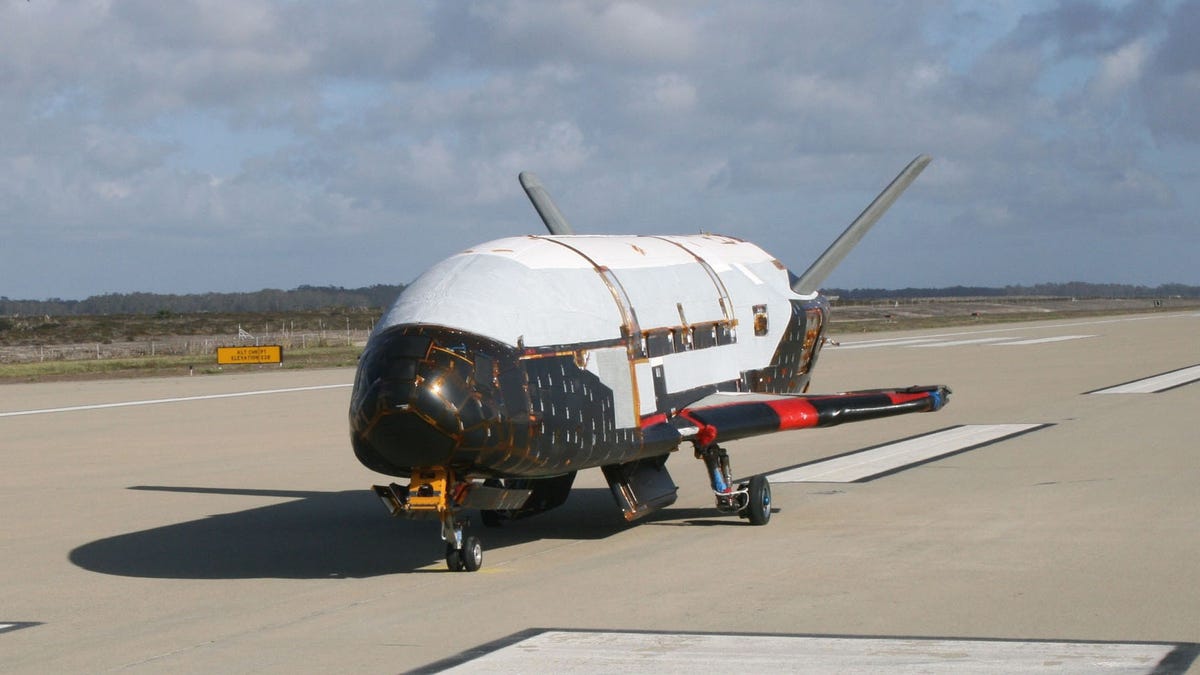Fox News Flash top headlines for November 12
Fox News Flash top headlines are here. Check out what's clicking on Foxnews.com.
Is the Air Force X-37B an armed space drone operating beyond the Earth’s atmosphere to destroy enemy satellites, ICBMs or aircraft of some kind? Is it a mobile surveillance platform intended to apply the latest sensor technologies to track enemy missiles, planes and satellites? Is it being developed as a moving networking platform or “atmospheric node” to connect satellites with one another, relay time-sensitive radar warning data,or send information to weapons assets within the Earth’s atmosphere?
Just what is the mission intent and concept of operation for the U.S. Space Force’s experimental X-37B Orbital Test Vehicle (OTV) drone? Such questions emerge as the Boeing-built space drone enters new phases of technological maturity and nears operational status. The X-37B is the first vehicle since NASA’s Shuttle Orbiter with an ability to return experiments to Earth for further inspection and analysis.
“Upon command from the ground, the OTV autonomously reenters the atmosphere, descends and lands horizontally on a runway,” according to an Air Force statement.
The emergence of technology of this kind raises the possibility that, at some point in the future, a laser and missile-armed autonomous drone could launch attacks in space. Laser technology is fast advancing and fighter-jet fired lasers are expected to arrive within the next few years, given advances in technology. Smaller form-factor, high-power applications of expeditionary, integrateable laser weapons are fast emerging as weapons to arm smaller, maneuverable fighter jets, the kind of progress highly conducive to arming a space drone.
NEW AIR FORCE STEALTH BOMBER ARRIVES IN JUST '2 YEARS'
The Air Force report goes on to say that the technologies being tested in the program include, among others, advanced guidance, navigation and control, thermal protection systems, avionics, high-temperature structures and seals, conformal reusable insulation, lightweight electromechanical flight systems, advanced propulsion systems, advanced materials and autonomous orbital flight, reentry and landing.

In a testing procedure, the X-37B Orbital Test Vehicle taxis on the flightline in June 2009 at Vandenberg AFB, Calif. (Air Force courtesy photo)
The technologies cited by the Air Force as under examination raise some interesting and substantial questions, several of which pertain to the ability to conduct operations at extremely high speeds and therefore high temperatures. “Thermal protection” is essential for space flight in several key respects, as not only is it necessary to ensure a stable flight trajectory for space-traveling weapons such as ICBMs or hypersonic missiles, but thermal protections or insulating technology of some kind is precisely the kind of technology needed to enable humans to travel through space. This raises the possibility that, at some unknown point in the future, armed, manned high-speed spacecraft may well launch attacks from beyond the boundaries of the Earth’s atmosphere.
Secondly, “advanced materials” are essential to successful space operation as they are what’s needed to engineer structures, components and propulsion systems durable enough to survive the temperatures and atmospheric rigors of space travel. Materials of this kind are already maturing quickly as they are fundamental to the operational deployment of hypersonic weapons. Not only are they necessary to sustain flight stability at hypersonic speeds, but they are required to ensure the structural configurations needed to generate the proper airflow boundary layer surrounding missiles, interceptors or spacecraft.
CLICK HERE TO GET THE FOX NEWS APP
Space autonomy is also of great significance, as advanced algorithms enabling autonomous space flight are progressing at lightning speed, creating a circumstance wherein unmanned systems could conduct surveillance missions, reinforce or expand satellite communications networks or even fire weapons when directed by humans operating in a command and control capacity.
-- Kris Osborn is the Managing Editor of Warrior Maven and The Defense Editor of The National Interest --

